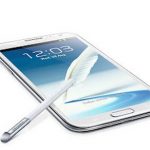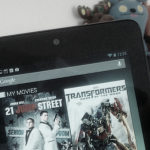When, if ever, will your LG smartphone get Android 4.1?

Jelly Bean is an elusive update for most high-end Android smartphones today, even though introduced at Google I/O four months ago. Today, LG revealed which devices will receive Android 4.1 in the upcoming months, undoubtedly in a move to catch up to the likes of HTC and Samsung that already have announced smartphones running the software.
The list of smartphones is not extensive, and includes more recent devices, such as the LG Optimus Vu and Optimus G; the latter model comes with Android 4.0 Ice Cream Sandwich and made waves in the smartphone market for its incredibly powerful hardware. The South Korean manufacturer's flagship, Qualcomm-powered, device will be updated to Jelly Bean in December.
Leaked Motorola Droid Razr M Android 4.1 Jelly Bean ROM is now available

Little more than a month ago Motorola announced its new Droid Razr smartphone lineup, among which is the 4.3-inch Droid Razr M. The phone ships with Android 4.0 Ice Cream Sandwich but, just like with the HTC One X, someone decided that it could use some jelly beans...
On Twitter P3Droid provides a download link for the Razr M Android 4.1 Jelly Bean ROM, with the standard warning regarding the voided warranty if flashed. Named "Blur_Version.77.111.10.XT907.Verizon.en.US.zip", the leaked file comes in at 255MB, and judging by the included files it updates the Verizon Wireless variant to Android 4.1.1 Jelly Bean and not the latest available.
SnapPea manages your Android device from Windows

Looking for a way to better manage the contents of your Android phone or tablet? SnapPea is a free tool, currently in beta, that could meet your needs. Regardless of whether your device was provided with its own management software, which is found wanting in the vast majority of cases, you can use the program to connect to your device to perform backups, transfer data and browse through images and other files.
You’ve probably found that keeping on top of your contacts on your phone can be a pain – with SnapPea you can take advantage of your computer’s mouse and keyboard to make changes, additions and backup more quickly and easily than ever before. Similarly, the program can also be used to browse through your text messages in a simple yet sleek interface, but more importantly it gives you the ability to send text messages from within Windows.
Google posts Android 4.1.2 factory images for Nexus S, Ice Cream Sandwich for Nexus Q

Yesterday Google updated factory images for the Nexus 7 and Galaxy Nexus; today Android 4.1.2 is available for the almost two-year old Nexus S smartphone and Ice Cream Sandwich for the US-made Nexus Q.
Nexus Q launched alongside the latest mobile operating system during Google I/O in June, but today marks the first time it makes an appearance on Nexus Factory Images, still available with the Android 4.0 it originally shipped with. In late July, Google suddenly suspended sales and delayed the entertainment device's launch. Release of factory images could foreshadow closer release. If nothing else, developers with the device have more options to experiment.
CyanogenMod 10 M2 -- second monthly release -- is available

A month ago the CyanogenMod 10 team introduced M1, the first monthly release of the popular custom Android distribution. M2 is now available, based on Android 4.1.2 Jelly Bean, supporting more devices.
Aimed at users looking for a more stable build, it can be used as a daily-driver on an extensive number of supported Android smartphones and tablets. The update, or fresh install for new users, can be performed manually, through ROM Manager or by using the built-in CM Updater app. Between the two monthly builds CyanogenMod 10 has undergone a massive list of improvements and bug fixes for each of the supported devices.
Google posts Android 4.1.2 factory images for Nexus 7 and Galaxy Nexus

Google released factory images for Android 4.1 Jelly Bean about a month after announcing the mobile operating system during its developer conference in June. But the Mountain View, Calif.-based corporation only waited two days after releasing the Android 4.1.2 update to post Google Nexus 7 and Galaxy Nexus factory images.
Using the factory images, the two devices can be updated to the latest Android version, 4.1.2 build number JZO54K, without waiting to get them over the air by cellular radio or Wi-Fi, or to be restored to stock after using a custom Android distribution such as CyanogenMod 10 or AOKP Jelly Bean. The factory images have only been updated for the Google Galaxy Nexus HSPA+ sold via Google Play and Google Nexus 7, yet they're likely to make an appearance for older devices as well, such as Nexus S.
Pimp My Rom takes Android modding to a new level

Modding is a very popular activity among Android users, which sometimes is a relatively cumbersome process. To make tweaking your green robot-based smartphone or tablet easier Pimp My Rom comes into play by promising to suit any Android distribution and device, while delivering an impressive number of customization possibilities. Pretty neat, isn't it?
Pimp My Rom, besides having a "naughty" connotation, is a script based on AROMA Installer that is designed to customize Android distributions and brings a number of features, mods and tweaks that can be selected and applied from a touchscreen interface. According to the developer, it can run on any device using Android 2.3 Gingerbread, 3.0 Honeycomb, 4.0 Ice Cream Sandwich or 4.1 Jelly Bean, basically covering more than 75 percent of all Android smartphones and tablets that run today.
Android 4.1.2 Jelly Bean comes early for CyanogenMod 10 nightly users, also brings a hidden feature

As a CyanogenMod 10 user I religiously check for nightly builds, and today I received a bonus. Yesterday my colleague Joe Wilcox wrote "Google updates Nexus 7 to Android 4.1.2" and, while it will take some time for the update to push throughout the Nexus lineup, Android 4.1.2 is already incorporated into the latest CyanogenMod 10 nightly.
CyanogenMod 10 nightly, October 10 build, is based on Android 4.1.2 Jelly Bean and sports the JZO54K build number, from the previous nightly that used Android 4.1.1 build number JRO03R. Upon a bit of research, for my Samsung Galaxy Nexus the popular Android distribution has undergone massive changes to include the "jb-mr0-release", similar to other devices such as the popular Samsung Galaxy S III, HTC One X or Google Nexus 7. Upon a bit further research it seems that apart from allowing launcher rotation, the build also includes a significant number of improvements from the previous build.
Google's new Tablet App Quality Checklist should be mandatory

My only real complaint with the Nexus 7 is the way apps are displayed. Many times developers have not compensated for a screen larger than 4 inches, and the resulting app looks terrible. Nexus 7 does a decent job of covering this up in some places due to the size of the screen, but when you come across an app that has clearly been designed for many screen sizes, you notice the difference.
Google encourages developers to design their apps to suit the operating system instead of the screen size through a variety of mechanisms, the most recent being a checklist to ensure higher quality design practices are being used when developing apps. In my opinion, this checklist should be much more than a friendly suggestion.
NASA sends HTC/Google Nexus One...into space

Launched with Android 2.1 Eclair in January 2010 the HTC-built Google Nexus One is more than two years old, but that is not stopping NASA from re-launching the smartphone... into space this time around.
Part of the PhoneSat program designed to create "small, low-cost, and easy-to-buid nano-satellites", in 2013 the National Aeronautics and Space Administration will launch Google's former Android flagship smartphone into space. According to HTC, NASA will not unbox the Google Nexus One and strap it on a rocket, as it was already put through thorough testing. The smartphone's first contact with space was in 2010, when it was attached to a rocket and launched to the edge of space, while also recording every step of the trip.
Samsung Galaxy Note II coming soon to T-Mobile

U.S. wireless carrier T-Mobile on Wednesday announced that it will bring the Samsung Galaxy Note II to its product lineup, but unlike the previous model this one does not have to make due with underpowered hardware compared to its international sibling.
Just like the international model, the T-Mobile variant of the Samsung Galaxy Note II comes with a 5.5-inch HD Super AMOLED display sporting a 1280 by 720 resolution, and is powered by the same 1.6GHz quad-core Exynos processor and 3100mAh battery with a quoted talk time of up to 15 hours. It will run Android 4.1 Jelly Bean with TouchWiz, and it will be available in two color options, Titanium Gray and Marble White.
Google updates Nexus 7 to Android 4.1.2

I typically don't post about minor Android updates, but Nexus 7 is popular among some BetaNews readers and this release reportedly comes with something many users have pined for: Desktop/launcher in landscape mode.
Jean-Baptiste Queru, technical lead for the Android Open Source Project, explains in a post on the Android Building Google group: "We're releasing Android 4.1.2 to AOSP today, which is a minor update on top of 4.1.1. As a note to maintainers of community builds running on Nexus 7: please update to 4.1.2 at the first opportunity. Future variants of the grouper hardware will have a minor change in one of the components (the power management chip) that will not be compatible with 4.1.1. The build number is JZO54K, and the tag is android-4.1.2_r1".
Moga Android game controller launches Oct. 21 across US

Video game accessory company PowerA on Tuesday announced the retail availability of Moga, the company's dual analog game controller for Android 2.3+ handsets. The device will be available for $49.99 through major retailers and national wireless carrier T-Mobile beginning on October 21.
Last year, I said the time was right for an Android-based video game console, but not much has been done to bring my assertion into reality. Moga doesn't bring us any closer to a traditional video game console powered by Android.
For better Android tablet apps, Google makes best practices checklist
Monday, Google's Android Developer Relations team published the Tablet App Quality Checklist so that developers can "make sure that [their] app meets the basic expectations of tablet users."
This checklist serves as a best practices guide, and includes ten key items for developers to acknowledge in their development process: Core app quality, tablet-optimized layout, full screen utilization, full asset utilization, font and touch target accuracy, homescreen widget correctness, one single version for all devices, no required hardware features, declaring tablet screen support, and following Google Play publishing best practices.
T-Mobile USA wants your iPhone 5

Samsung Galaxy S III may be T-Mobile USA's all-time best-selling smartphone, but the carrier has other ambitions. The title is easily claimed on the network that doesn't offer iPhone, no thanks to Apple. But T-Mobile does want your iPhone 5, even if the carrier can't sell it to you. Several corporate stores confirmed to BetaNews that before month's end they will carry nano-SIMs for the handset.
That's assuming you can find one at an affordable price. iPhone 5 isn't yet available unlocked, carrier-commitment-free and likely won't be for as long as supply shortages persist. Apple's US online store currently puts delivery times at three to four weeks. iPhone owners, T-Mobile really wants your business. Big promotion: "Bring your own phone to T-Mobile and save $50 a month".
Recent Headlines
© 1998-2025 BetaNews, Inc. All Rights Reserved. Privacy Policy - Cookie Policy.